Blog
Cedar House Life Change Center

When Steven was in his final days of treatment at Cedar House, he took time to write about his experience and share his story with his group. This is his heartfelt reflection in his own words: My name is Steven, and I am a recovering drug addict. Throughout my life I have used a variety of drugs from marijuana, cocaine, meth, and heroin to fentanyl. There would be times when I would hear people share and say that they are just like me. But I am not going to do that today, because I have no idea of what your stories are. What I would like to do is share a little bit of my story and what I have been through, and maybe you can relate to it. In my story, I took a path with so much pain and adversity. I would hide the pain from everyone. At a very young age, I was molested. This started my journey of PTSD and drug addiction. I would hide and isolate from people because I was terribly afraid of what people would think of me. I felt ashamed for what had happened to me. So, when my sister offered me drugs at a young age, I did them with her, and I felt a sense of relief. It would numb the pain and embarrassment that I felt from what had happened. My self-pity drove me into doing more and more drugs. I would blame myself for what that person did to me. I was so angry that I had no control over what had happened. I was just a child. I bottled up my feelings and buried them deep down inside. It would eat at me every day -- day in and day out. Growing up, the pain would lurk its ugly head. The worst it ever got was when I was alone in the dark. I felt so much fear growing up. This is something I had to overcome and learn from. Life is so interesting. It makes us walk through different paths of choices. We are unable to see the destruction and pain we are about to go through. These challenges mold us and makes us the people we are today. There are two experiences that I would like to share with you today. The first is my divorce and the second is the death of my sister. These events steered me into a life of addiction, and I hope my message can help change at least one life. I know that I felt exhausted from the life of chasing -- chasing for a cure that would never appear. My divorce was not something simple. It ate at me every day. I got there through a series of issues that happened. I was fired from my job. I had to sell my home that I bought for my now ex-wife and my unborn son. I sat and cried in my son's room alone because I felt like a failure. During all of this, I was hiding my addiction until I couldn't handle it anymore. My wife found out and kicked me out of our apartment. I felt so angry, I felt like she threw me out like trash. I was acting like a child, instead of dealing with it like I should have. I was so hard on myself. I felt like I was losing control, but the lesson to this is to allow things to go. I needed to surrender to this. I also learned that I needed to ask for help instead of hiding from the issues. This takes me to my next lesson -- when my sister passed. When my sister passed away, it was seven days of hell. She passed due to multiple abscesses, one on each arm and one in her stomach. I stayed up for seven days changing her bedding because she would either defecate or urinate on herself. I cleaned her and watched her as she tried to sleep but couldn't because of the pain. I tried to plead with her to let me call 911 because at the time, I had no idea what was happening. She would say, "No, I want to wait for mom to come home." Our mother was away on vacation visiting family out of the country and would return in seven days. I can still hear her cries of agony, day after day. She made me promise that I wouldn't call 911 until our mother returned. So, I kept that promise and kept her secret. I never knew what an abscess was and how serious it would become. After the 7 days were up, our mother returned home. The next morning, we called 911. My mother was frantic and didn't know what to do. Even in agony my sister lied to the EMTs; she said nothing about her use. My sister wanted our mother to not find out her secret. I couldn't stay quiet any longer, I told the EMTs everything, but it was too late. My sister passed away after two days. The doctors tried to take the contaminated blood out of her system, but nothing they did helped. It was just too late. Prior to all of this, I would plead with my family to help my sister. They just did not want to believe that there was a problem. During her funeral, everyone was upset and saying they could have done this or that. I was so disgusted with my family that I didn't attend. I wanted to remember my sister by the good times and not the last seven days of her life. I felt so much guilt over what had happened. I had to deal with the pain. I had to let go of the resentment, anger, fear, sadness, judgement, secrets, hurt, blame, and guilt. I had to put my faith in something more. I had to put my faith in a higher power. So, I had to make some changes in my life. I started making commitments. Making a commitment every day to stay sober requires faith. If I make the necessary changes, things will get better. I need to accept that some choices and things are out of my control, and I need to be okay with that. I will trust myself in making the changes that are needed and have pride in myself. My selfishness will be in my sobriety and not in negative actions towards people. Faith can be anything I desire it to be. Cedar House has taught me to take responsibility in myself, my actions, my behavior and, most importantly, in my addiction. Throughout this journey, I have learned to love myself again, to work on my character defects, and to gain so many new brothers in sobriety. In life, so many people make mistakes, and you can choose to get up and make the necessary changes or get beat down. And I was beat down over and over again. I walked into rehab beaten, bruised, and broken. It was challenging, but over time the bruises healed and the bones that were broken started to heal as well. I am grateful to overcome the mountain of rehabilitation. I didn't do this by myself. It took a brotherhood of men who were broken and beaten, too. We all faced our fears in our own time. It also took the patience and care of our counselors. They gave us guidance and advice that we desperately needed. They were the lighthouse to our battered ships. Without them we wouldn't know which way to steer. To my brothers in the war of sobriety, I say, my love goes out to you, to the ones who are healing, and to the ones who still need help. To the staff of Cedar House, no amount of gratitude will express how much I am thankful for. You revived my broken soul. I will end with one final thing to my brothers, you're not alone.
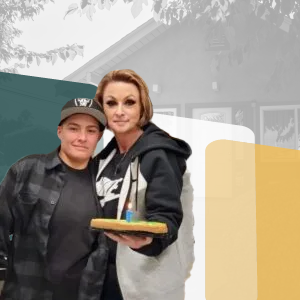
As a teenager, Sabrina overcame the challenges of bouncing around numerous foster and group homes, frequently being rejected for her sexuality. She emancipated from the system and prepared herself to start school. The company she kept, unfortunately, led her down a dark path instead. The young woman with whom Sabrina had a relationship since the age of 15 was a drug addict. She used meth on a regular basis and tried to convince Sabrina to join her. Sabrina wasn’t interested. As a matter of fact, she argued with her girlfriend time and again begging her not to use. But ultimately, there came a time when Sabrina lost that argument and was persuaded to try using meth herself. She was living in a group home in Pasadena when it happened. Sabrina said, “I can’t count how many group homes and foster homes I had lived in.” Her girlfriend and roommate surprised her by using meth in her room while she was in the shower. She said, “I was scared of meth. I wouldn’t touch it.” When she entered the room and saw that they were using, they fought for a long time before her girlfriend finally said, “If you love me, you’ll try it.” And that was the final straw. Shortly after that first experience with meth, Sabrina and her girlfriend, both addicted, were kicked out of the group home. She was homeless, hadn’t started school and was barely getting by with cash aid and food stamps. Even at times when Sabrina wasn’t interested in getting high, her girlfriend would manipulate her into using. Sabrina lived under a bridge on a binge in Pomona for three years. During that time, she met up with an old boyfriend which led to an unexpected pregnancy. She said, “I didn’t even know I was pregnant until I went into labor. I was so high and so skinny.” The paramedics immediately took the baby girl away, but that was a turning point for Sabrina. She said, “I fought tooth and nail to get her back.” Her social worker asked if she would be willing to go to rehab in order to gain custody of the baby, and Sabrina wholeheartedly agreed. She called every day to inquire about getting into a residential program. In March 2018, she was admitted to the Maple House program. She simply wasn’t ready. During her stay at Maple House, she was rude, disobedient and angry. By May she had made very little progress, and her behavior led to her dismissal from the program. A few months later, she entered another rehab program where she served as kitchen coordinator and began to make some progress toward sobriety. She got in trouble there for breaking rules and was dismissed from that program as well. Next, she tried an outpatient program and continued staying clean and sober. She moved into a sober living facility. When one of her drug tests came out questionable, she had to leave that home, too. She said, “I ended up losing my home and losing faith again. I went back to the streets in Pomona.” On February 21, 2019, her social worker managed to get her back into the treatment program at Maple House. This time she was ready. She loved her counselors and learned so much from them. Sabrina said, “They really helped me through it. Rosanna opened my mind. Rita taught me to cook and gave great advice. They were always there to listen, and they motivated me to do good. I could talk to them instead of getting angry.” At Maple House, Sabrina learned the importance of surrounding herself with kind-hearted people who not only care about her, but also continuously build her up to be the woman she was born to be. She has been sober for nearly two years and is the proud mother of two young girls.
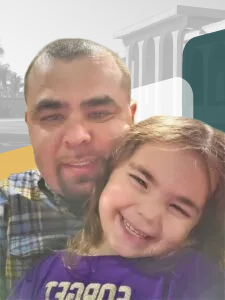
Eduardo checked the gas gauge of his green Honda and realized he was almost empty. With no cash, no home, no job, and no family, he knew where he needed to go. And he had JUST ENOUGH gas in his tank to get there. From the age of sixteen, Eduardo had been abusing drugs and alcohol. In the summer of 2005, he began hanging around a rough crowd and started smoking cigarettes, then weed, then meth. Rock bottom came three years ago when he and his fiancé moved to Las Vegas. “I started stealing and lying; spending all my checks on gambling and drugs. I lost my fiancé; I lost my brother’s, my sister’s and my parents’ trust.” Eduardo ended up living on the streets with only his car and his luggage. That’s when his brother told him about Cedar House, and Eduardo realized he had just enough gas to get there. He arrived at 10 p.m. on June 27, 2017. He said, “I was tired. I just wanted to stop and relax. I didn’t want a pipe in my mouth.” The next morning, he learned that Cedar House had a waiting list to be admitted into the residential program, but Eduardo had no place to go. He stayed outside in his car waiting until a bed came available. He spent the next 45 days at Cedar House working on changing his life. Eduardo said, “At first, I didn’t like going to group (meetings), but eventually I thought to myself, ‘I’m setting myself up for failure.’ That’s when I started doing the work, especially learning about my triggers.” Between learning certain types of music that triggered his addiction to meeting individuals who would significantly impact his life, the Cedar House experience made an indelible mark on Eduardo. He said, “When you’re trying to recover, you’re so vulnerable, but there were some amazing gentlemen that really helped me along.” One man in particular changed the course of Eduardo’s life in a way he never expected. He said, “I made the decision to leave (Cedar House) because I had reached the peak of my withdrawal. I had so much going through my mind and so many emotions going through me. If I left, I would have just gone straight back to doing the same things, and things would be a whole lot different right now. But Michael stopped me. He sat me down and had a powerful chat with me. He calmed me down and gave me the strength to continue the program. That man really cares about the people at Cedar House.” We couldn’t agree more. Michael Rodriguez is the Men’s Residential Coordinator at Cedar House and an EPIC Life Changer. We’re thankful to him for his compassion and persistence. And we’re thankful that Eduardo took his advice and persevered. After graduating from Cedar House, he went to work at his brother’s restaurant. Soon after, he reconnected with his fiancé and children in Las Vegas where he began working at a facility making plastic polymers for medical devices. It’s work that has been steady for him and his family even during these challenging months of the pandemic. Eduardo says he would not even consider doing drugs again now that he has made so many positive changes in his life. Thankfully, he had just enough gas in the tank and determination to continue with his treatment to change his life.
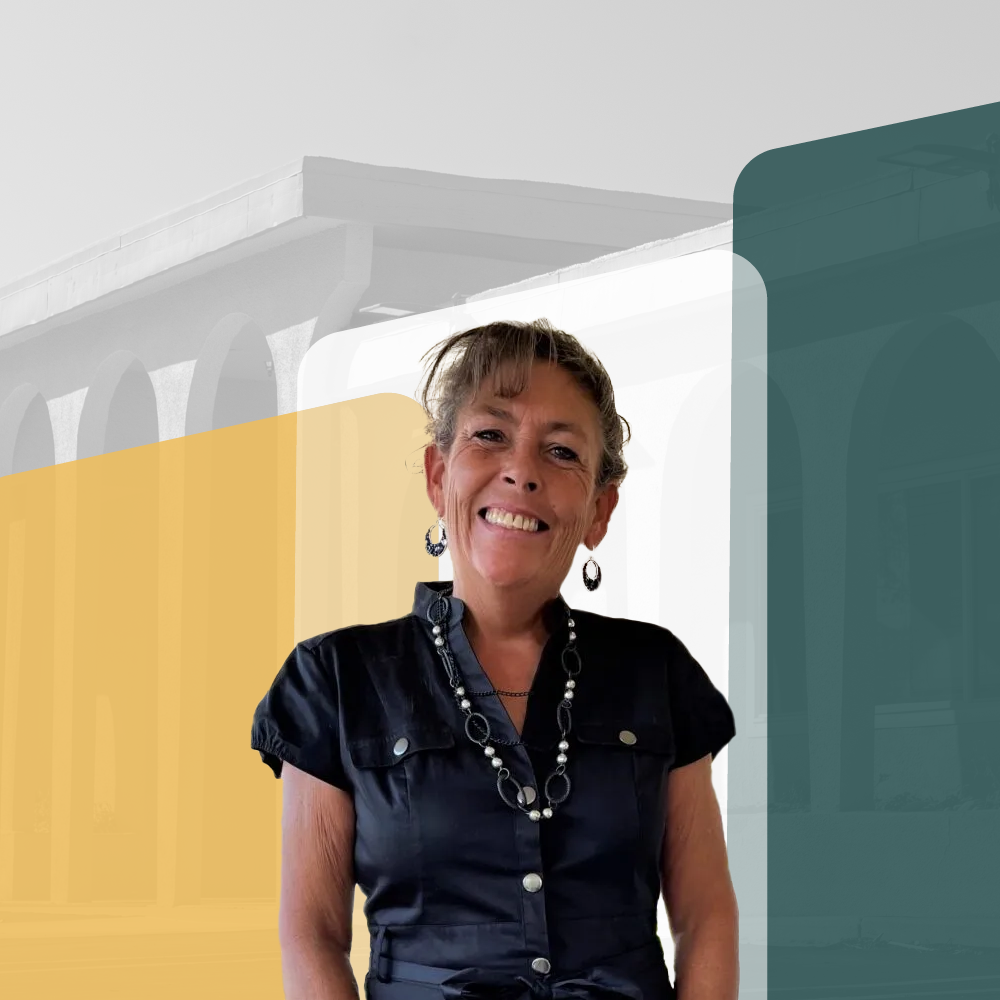
“What does Misty want?” That’s what Misty’s counselor asked as they worked through her addiction. With her judgement clouded by alcoholism, Misty struggled to pinpoint the answer. But over time, as she continued to work the program, she began to think clearly and discover the truth about what she wanted for her life. Raised in a dysfunctional family, Misty was a lonely child. She was sexually abused as a young girl and fell into depression. During high school, her family moved around frequently, and she found herself using alcohol to numb her feelings. In her 20s, she was deep into the party scene, using alcohol not only as a comfort but also as a method to feel bold and glamorous. Misty said, “It was a comfort. It was my medicine. It gave me courage to talk and be bolder. I was wittier and prettier when I drank.” But in retrospect, she said, “I didn’t realize how lonely I was.” When her boyfriend went through AA, she discerned that her family had suffered with addiction when she was growing up but thought it would never happen to her. As she dipped deeper into her own alcoholism, she would lose her inhibitions and “confuse all kinds of things with love.” Misty’s first husband was an abusive alcoholic. They had two children together, but Misty continued her drinking habits. She admits that she was a functioning alcoholic but didn’t realize it at the time. She was able to keep up with her job while drinking only after work and on weekends. She said, “It became an issue when I started having a drink before work. It became a necessity; my body needed it to keep going.” That daily alcohol abuse lasted 4-6 years and did a great deal of damage in her life. But she wasn’t thinking clearly. Even when she lost her job, Misty did not worry. She said, “Drinking takes your cares away and becomes your life.” She became homeless when the house she was living in was sold. She said, “I didn’t care as long as I had more alcohol.” She became a bartender and bounced from place to place for a place to sleep. Finally, she began to feel miserable when she was drinking. She said that she became a “mean drunk” and that suicide became a tempting alternative. After a couple of failed suicide attempts, she said, “I knew I had to quit but didn’t know how.” Fortunately, a doctor told her about the withdrawal management program at Cedar House. For six days, she detoxed from alcohol at Cedar House, followed by another 106 days in the residential program. During that time, she said, “I learned so much of myself and why we turn to alcohol. It wasn’t just three hots and a cot for me.” She learned that she had developed a mental disorder in connection with her alcohol abuse and worked with her counselors to heal. About the staff at Cedar House, Misty said she was most impressed with “their understanding of the disease; their knowledge; their experience; and their ability to pinpoint where I needed to start.” She felt safe at Cedar House and worried about “what’s going to happen when I get home.” After graduating from the program, she made an effort to rearrange her room and her life when she went home. When she found herself starting to get complacent, she went to a meeting her friend was leading. From then on, she has gone to a meeting every day. She said, “You can only take it one day at a time. You have to truly work the program. I am definitely a changed person.” Misty’s Case Manager Salena gave her a packet with information on feelings and emotions when she was at Cedar House that Misty continued to refer to for answers. She knew that the question: “what does Misty want?” was an important one that she needed to learn to answer by understanding her own feelings. She said, “Those questions are hard when you’ve been clouded.” She is proud to say that, a year later, by taking it one day at a time, she is a changed woman who is thinking clearly.
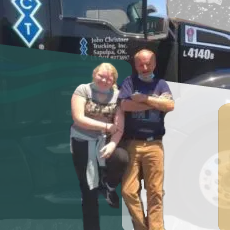
Robert’s story is unlike any other. With a dark, violent past, he struggled to see a future without drugs. But after 90 days at Cedar House in 2013, he has built a successful trucking business and is a proud father. Eight years ago, Robert’s life was out of control. He said, “The addiction was a struggle for me. I couldn’t get up in the morning without doing dope.” He was up to a quarter ounce of meth a day and couldn’t stop. His wife of 13 years was also an addict, and, according to Robert, their marriage was “nothing but violence and drugs.” When Robert caught her cheating, he said he “went over the edge.” He received a felony charge for threatening to kill her, but, because of a mental health diagnosis, he was released into the care of Cedar House through the STAR (Supervised Treatment After Release) program. He said, “They welcomed me like I was part of the family.” His experience at Cedar House truly changed him. He could finally see a way out of the dangerous lifestyle he had known for so long. Robert said, “They really cared for me. They showed me a different way of life that I really wanted.” After completing treatment, Robert began working at a casino but wanted to pursue a different career path. He called a trucking company that was hiring and got declined because they saw a felony on his record. He went straight to the courthouse to prove that it was not accurate, and they hired him a few hours later. His life was on track until he re-married a woman who unfortunately was an alcoholic, and this marriage was also a struggle. He said, “I wanted so many times to do drugs again but didn’t.” Finally, he made the decision to leave the relationship and move to Arizona. A few years later, he went to CRST Trucking School and earned his Class A license. Six months later, he bought his first truck. Robert is now an owner/operator of his own business. He bought a house in Laughlin, Nevada, and is in a new, healthy relationship. Through his earlier challenges, Robert lost custody of his daughter, but, after eight years, he has re-connected and hopes to re-gain custody soon. His 21-year-old son pitches for his university’s baseball team, and Robert couldn’t be prouder. He recently paid a visit to Cedar House to share his success and thank his former case manager, Michael Harang. He said, “I had been through life-long drugs before Cedar House. Michael was the best person. He lifted me up.”

Are you ready to get on the path to recovery? Maybe you've been sober for years and continue to work on your recovery everyday. Or, you might be suffering and feel unsure about whether you can even start battling your addiction. Wherever you are in your journey, Cedar House is here to support you along the way. Sometimes, simple words of wisdom go a long way in motivating you to pursue a better life. Please use the following collection of inspirational quotes to guide you along whatever part of the path you find yourself on today: 1. “If you can quit for a day, you can quit for a lifetime.” – Benjamin Alire Sáenz 2. “Hardships often prepare ordinary people for an extraordinary destiny.” – C.S. Lewis 3. “I got sober. I stopped killing myself with alcohol. I began to think: ‘Wait a minute. If I can stop doing this, what are the possibilities?’ And slowly it dawned on me that it was maybe worth the risk.” – Craig Ferguson 4. “Courage isn’t having the strength to go on – it is going on when you don’t have strength.” – Napoleon Bonaparte 5. “We honor ourselves when we speak out for recovery. We show the world that recovery matters because it brings hope and peace into the lives of individuals and their loved ones.” – Beth Wilson 6. “As human beings, our greatness lies not so much in being able to remake the world as in being able to remake ourselves.” – Mahatma Gandhi 7. “I think that the power is in the principle. The principle of moving forward, as though you have the confidence to move forward, eventually gives you confidence when you look back and see what you’ve done.” – Robert Downey Jr. 8. “No matter how dark the night may get, your light will never burn out.” – Jeanette LeBlanc 9. “The ultimate measure of a man is not where he stands in moments of comfort and convenience but where he stands at times of challenge and controversy.” – Dr. Martin Luther King Jr. 10. “Sometimes we motivate ourselves by thinking of what we want to become. Sometimes we motivate ourselves by thinking about who we don’t ever want to be again.” – Shane Niemeyer 11. “One of the hardest things was learning that I was worth recovery.” – Demi Lovato 12. “Rising from the ashes, I am born again, powerful, exultant, majestic through all the pain.” – Shannon Perry 13. “Sometimes you’ve just got to give yourself what you wish someone else would give you.” – Dr. Phil McGraw 14. “Sobriety was the best gift I ever gave myself.” – Rob Lowe 15. “Recovery is all about using our power to change our beliefs that are based on faulty data.” – Kevin McCormick 16. “The man who moves a mountain begins by carrying away small stones.” – Confucius 17. “Though no one can go back and make a brand-new start, anyone can start from now and make a brand-new ending.” – Carl Bard 18. “Believe you can, and you’re halfway there.” – Theodore Roosevelt 19. “Amazing how we can light tomorrow with today.” – Elizabeth Barrett Browning 20. “Don’t let the past steal your present.” – Cherríe L. Morga 21. “If we are facing in the right direction, all we have to do is keep walking.” – Buddhist Proverb 22. “When everything seems to be going against you, remember that the airplane takes off against the wind, not with it.” – Henry Ford 23. “I hated every minute of training, but I said, ‘Don’t quit. Suffer now and live the rest of your life as a champion.’” – Muhammad Ali 24. “Our greatest glory is not in never failing, but in rising up every time we fail.” – Ralph Waldo Emerson 25. “It is by going down into the abyss that we recover the treasures of life. Where you stumble, there lies your treasure.” – Joseph Campbell 26. “If you accept the expectations of others, especially negative ones, then you never will change the outcome.” – Michael Jordan 27. “People often say that motivation doesn’t last. Neither does bathing. That’s why we recommend it daily.” – Zig Ziglar 28. “I understood, through rehab, things about creating characters. I understood that creating whole people means knowing where we come from, how we can make a mistake and how we overcome things to make ourselves stronger.” – Samuel L. Jackson 29. “Success is the sum of small efforts, repeated day in and day out.” – Robert Collier 30. “My recovery from drug addiction is the single greatest accomplishment of my life… but it takes work — hard, painful work — but the help is there, in every town and career, drug/drink freed members of society, from every single walk and talk of life to help and guide.” – Jamie Lee Curtis 31. “Life is like riding a bicycle. To keep your balance, you must keep moving.” – Albert Einstein 32. “Sometimes you can only find Heaven by slowly backing away from Hell.” – Carrie Fisher 33. “It is 10 years since I used drugs or alcohol, and my life has improved immeasurably. I have a job, a house, a cat, good friendships and, generally, a bright outlook… The price of this is constant vigilance because the disease of addiction is not rational.” – Russell Brand 34. “Fall seven times, stand up eight.” – Japanese proverb 35. “I realized that I only had two choices: I was either going to die or I was going to live, and which one did I want to do? And then I said those words, ‘I’ll get help,’ or, ‘I need help. I’ll get help.’ And my life turned around. Ridiculous for a human being to take 16 years to say, ‘I need help.’” – Sir Elton John 36. “Character cannot be developed in ease and quiet. Only through experience of trial and suffering can the soul be strengthened, ambition inspired, and success achieved.” – Helen Keller 37. “If it wasn’t for that rehab center, I probably wouldn’t have been here. In terms of recovery, it has been very important for me to be a part of a recovery community, to actively be around my people because they understand me. They get it.” – Macklemore 38. “All the suffering, stress, and addiction comes from not realizing you already are what you are looking for. “– Jon Kabat-Zinn 39. “It always seems impossible until it’s done.” – Nelson Mandela 40. “Every experience in your life is being orchestrated to teach you something you need to know to move forward.” – Brian Tracy 41. “Man never made any material as resilient as the human spirit.” – Bernard Williams 42. “I have learned over the years that when one’s mind is made up, this diminishes fear.” – Rosa Parks 43. “Nothing is impossible; the word itself says, ‘I’m possible!’” – Audrey Hepburn 44. “What lies behind us and what lies before us are tiny matters compared to what lies within us.” – Ralph Waldo Emerson 45. “I can’t change the direction of the wind, but I can adjust my sails to always reach my destination.” – Jimmy Dean 46. “I dwell in possibility.” – Emily Dickinson 47. “Experience is not what happens to you, it is what you do with what happens to you.” – Aldous Huxley 48. “We can’t solve problems by using the same kind of thinking we used when we created them.” – Albert Einstein 49. “Whether you think you can or you think you can’t, you’re right.” – Henry Ford 50. “The only person you are destined to become is the person you decide to be.” – Ralph Waldo Emerson 51. “As one goes through life, one learns that if you don’t paddle your own canoe, you don’t move.” – Katharine Hepburn 52. “Amazing how we can light tomorrow with today.” – Elizabeth Barrett Browning 53. “When you get into a tight place and everything goes against you, till it seems you could not hang on a minute longer, never give up then, for that is just the place and time that the tide will turn.” – Harriet Beecher Stowe 54. "I went to hell and back, but I wouldn’t have it any other way. Then I wouldn’t be in the position I’m in, happy about life and comfortable in my skin.” – Drew Barrymore 55. “Rock bottom became the solid foundation on which I rebuilt my life.” – J.K. Rowling 56. “Turn your face to the sun and the shadows fall behind you.” – Charlotte Whitton 57. “You must do the things you think you cannot do.” – Eleanor Roosevelt 58. "Even in the midst of devastation, something within us always points the way to freedom." - Sharon Salzberg 59. "Recovery is hard. Regret is harder." - Brittany Burgunder 60. "If things go wrong, don't go with them." - Roger Babson

Ten years ago, when Jen started residential treatment at Cedar House, she knew her addiction was spiraling out of control, and she needed help. What she didn’t know was what treatment was really all about and the true value of the community she would find at Cedar House. As a young woman in her 20s, Jen liked to “work hard and play hard.” She earned her associate degree and worked in retail management. During that time, she began drinking heavily. By the age of 29, she had four DUIs. She said, “I would wake up and fixate on drinking. I realized that I was in the grips of alcoholism.” After trying out meth to sober up enough to drink even more, meth became her drug of choice. Jen said, “Meth is evil. It’s the devil. It leads you to do things you would never do for that next high. I felt invincible, just didn’t care, and ended up losing friends and family along the way.” From 2003-2013, Jen was in and out of jail and prison. When she got out, she would go back to drinking, using, and couch surfing, while never really admitting to being homeless. In March of 2013, Jen’s parole agent told her that she needed treatment at Cedar House “or you’ll find yourself back in jail”. Jen said, “I didn’t really know what that was.” But she made the call and entered the Cedar House program three days later. When she walked in and began the intake process, the admissions staff asked about her living arrangements, and she realized for the first time that she really was homeless. She said, “For me to admit that truth, I knew, this is it. This is my best effort for something different, and I was desperate for something different.” Now, Jen considers that “the gift of desperation. It reminds you where you don’t want to be. Never forget day one.” One day, when Jen was settling into life at Cedar House, she heard a group of women making noise in the TV room when one woman joked, “Can we quiet down and get some recovery in here?” Their conversation continued, and Jen listened as they talked about the program and the steps. She said, “They were on fire for recovery! I remember thinking, ‘That’s what I want. I want to follow that!’” She spent the next 90 days absorbing as much as she could from the groups and people’s stories. She learned to set goals and create a timeline for her life in the next year. Starting with those three months of residential treatment, she mapped out the next three months for outpatient treatment, meetings, and a plan to go back to school for her drug and alcohol certificate after six months. Day after day, she fine-tuned the timeline, which would prove to be a crucial tool for her sustained recovery. Someone special had come into Jen’s life at that time, but she wasn’t fully aware of her just yet. During the time Jen spent in and out of jail, speakers occasionally came in to address the inmates on a panel. One woman’s inspiring message stood out to Jen every time. One day at Cedar House, the same woman appeared on a panel addressing clients. Jen was excited to have the opportunity to approach the panel that day and meet the woman who would later become her sponsor and dear friend, Ernestine. Starting with Ernestine and a few close friends she met at Cedar House, Jen built herself a community of like-minded individuals who support each other in recovery and in life. This group of men and women who would attend church on Sundays while in treatment has continued going to church and meetings together for the past ten years. They stay connected with a Facebook group chat and look forward to seeing each other at events. Jen wholeheartedly believes in the value of her community. She says, “We need to have and build community.” With ten years of sobriety, Jen knows that it took a village to help her get to where she is today. After her time at Cedar House, she continued to follow her timeline with outpatient services, meetings and sober living. She earned her drug and alcohol certification at Valley College in 2015, an associate degree in human services, and her bachelor’s degree from Antioch University in Culver City in 2020. Since finding recovery for herself, Jen has helped countless individuals learn to live a clean and sober life through various programs. In 2021, she came to work at Cedar House as a Case Manager and continues to be an EPIC Life Changer every day. She said, “The 12-step program teaches honesty and integrity. Learning those things is so important. That acronym EPIC (which stands for Cedar House’s core values of excellence, passion, integrity and compassion) means a lot to me.” She continues to teach the principles of recovery that serve her well. She encourages clients to make a timeline. She said, “It just makes sense. What are you going to fill your time with? What are you going to do in the next 365 days?” “Building community. That’s what we’ve done. You have to lose everything you think you know in order to start something better.” This is the message she shares with clients, learned from “a whole lot of life experience.” She said, "You’ve got to turn it around and use it for something good.”
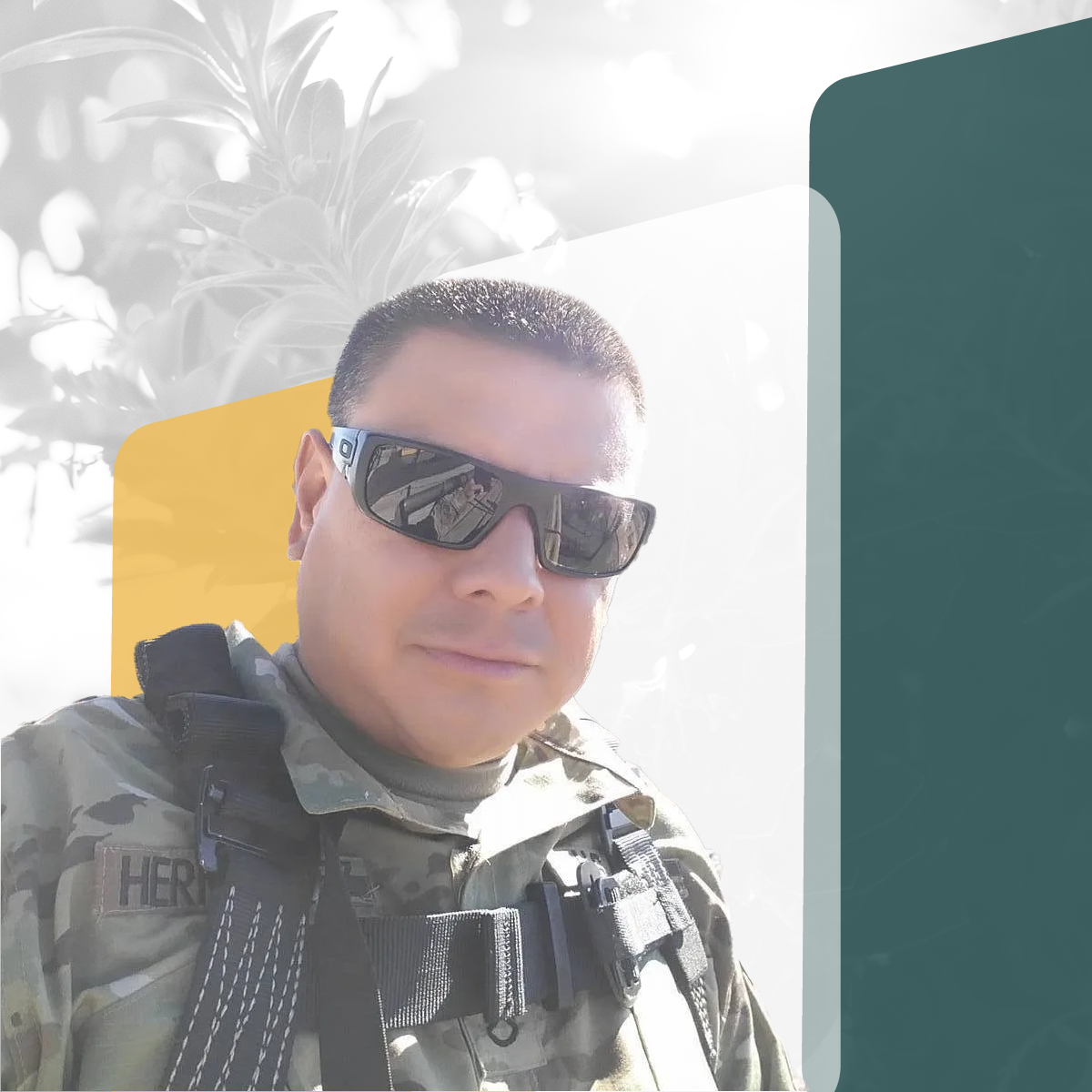
When Tony walked into Cedar House years after completing treatment, he realized that his new perspective on life could save lives. He remembered the power of the testimonials he heard as a client and knew he should share his. What he didn’t realize was just how powerful telling his own story could be. After recounting all he had been through over the years, Tony said, “Thank you for the opportunity to tell you my whole story. I’ve never actually just gone through from top to bottom and told my full story. Wow! It’s just awesome to think how much this recovery thing really works. It’s pretty amazing!” Think about that. Tony credits the stories he heard at Cedar House with planting the seed for his recovery. For the first time, he felt that he wasn’t alone in his battle with addiction. And now, the telling of his own is providing staying power for his recovery. Tony’s relationship with meth was unrivaled in his late 20s. He said the first time he tried it, “It was like love at first sight. I knew we were going to have a relationship.” He felt that the chemicals in meth were his companion, giving him courage and defining who he was. After using only on weekends for a few months, he found his own dealer and became a daily user. When he found out it could be smoked, that was it. He said, “I went from being a social person to a recluse. I quit culinary school and spent a year using.” Fortunately for Tony, he had friends who recognized he needed help. They came to his home and told his mother the situation. She was devastated, but together they helped him get into an outpatient program. For four years, he tried unsuccessfully to quit on his own or attempt different outpatient programs but continued using during that time. In 2007, Tony was living in his car and deep in his addiction. He was frequently sick and barely remembers how he came to enter into treatment at Cedar House. He knows that he tried calling regularly to get in and was relieved when someone called to tell him there was a bed available for him. He spent the next 90 days at Cedar House learning about his disease and how to overcome it. He said, “They were brutally honest with me and asked the right questions.” That’s when he uncovered some of the childhood trauma that contributed to his struggles. He also learned to accept his higher power and to let people in to help him. Listening to fellow clients and staff share their testimonies empowered him to change his life. Reflecting on other lessons he discovered during his time at Cedar House, Tony said, “I didn’t know that all I needed was to get some good life skills and give it an honest try.” Near the end of his residential treatment, Tony went with a group of clients from Cedar House to a job fair at Fairmount Park. It was there that he decided to join the Army. He served in the U.S. military for 10 years and moved up the ranks to Drill Sergeant. Tony said, “Recovery is not just staying clean. It’s moving forward in life.” He is indeed moving forward with his, as he continues his education in pursuit of a human services degree next spring and eventually a psychology degree beyond that, in order to be able to serve people in a clinical environment. In that way, he said that he is “starting to use (his) skills and trust the process.” Cedar House set me in the right direction. I wouldn’t have felt capable if it wasn’t for Cedar House. They primed me and prepped me to see my value and that my life is worth living. Between his time in the service and his experience in rehab, Tony learned the importance of feeling empowered. He hopes to impart these lessons on other individuals in need: “Don’t tell me what you can and cannot do. I’m going to tell you. Empower you. You have no idea what you’re capable of. If it worked for me, why can’t it work for you.” He believes in practicing life skills, going to meetings, having a sponsor, meditation, prayer, not giving in to cravings, and believing in his skills. Those firm principles and the strength of his story will take him far in life and in his efforts to serve others in need.

As a carpenter on set for the Los Angeles Ballet, Richard knew a thing or two about building a solid foundation. Board by board, he helped set the stage behind the scenes for beautiful performances. But, back home, his marriage was falling apart, and he didn’t seem to have the tools to repair it. He fell hard into a dangerous lifestyle of drinking heavily every day “to kill the pain.” The habit spiraled into eight years of alcoholism, suicide attempts and homelessness. Richard recalled his first suicide attempt and the four-day stay in the hospital that followed. He said, “It was the best few days because I was taken out of the world and put in a safe place.” One of his nurses recommended Cedar House to him, and he agreed to go into treatment. That’s when his foundation was initially laid for recovery. He said it took him two weeks to truly sober up, but then he synced into rhythm for the next 90 days in residential treatment. He said, “I am definitely not the same Richard.” At Cedar House, he got answers about how to deal with his fear and anger. He implemented what he learned and stayed sober for 13 months. Unfortunately, he relapsed and ended up in the hospital again a few years later. He thankfully returned to Cedar House where he was welcomed with open arms. He remembered a staff member encouraging him and telling him then that “this time you’ll hear something you didn’t hear last time.” When he stumbled, he knew he could call on Cedar House to help him get back up. After another 90 days in treatment, Richard returned home and maintained his sobriety for 16 months. He cared for his ailing mother and managed a challenging relationship with his brother who had a drinking problem of his own. He admitted, “My relapses happened at home. Each relapse, my determination got stronger to not die an alcoholic’s death.” So, he returned to Cedar House. During that last stay at Cedar House, Richard learned that his brother died in his sleep. He thought, “He died my death. That hit me hard. But I thought about the tools I got from Cedar House.” Richard learned a new way to live at Cedar House. He said, “I was rescued, and Cedar House was part of the rescue plan. They taught me a new way to feel about myself. Someone told me, ‘You’re gonna find out you’re a pretty nice guy.’” At Cedar House, he proudly served as a volunteer behind the scenes in the multi-purpose room, staging the flag every morning and taking it down in the evenings. Since he had worked in carpentry and theater his entire life, he wanted to serve the community that he had such great appreciation and admiration for. He said, “My case manager Mike is such a wonderful man. Very supportive and awfully bright. Cedar House is the fertilizer for my recovery. It’s my roots and my foundation. Mike is on a pedestal. That’s how much he affected me.” From then on, Richard continued to live a clean and sober life. He found work, housing and a better way to live. He said, “I got sick and tired of being sick and tired. Now, if I get invited to a party, I bring a sober buddy.” He spent the past seven years in recovery serving his community with outreach to the homeless who suffer with addiction. He said, “I went to meetings, prayed a lot. I had to do it. I couldn’t go backwards to a life of drugs, crime, and mayhem. I can’t save everyone. I just help. I share that my story is one of determination, tenacity and the will to live. Everyone deserves to be a success story.”


Share On: